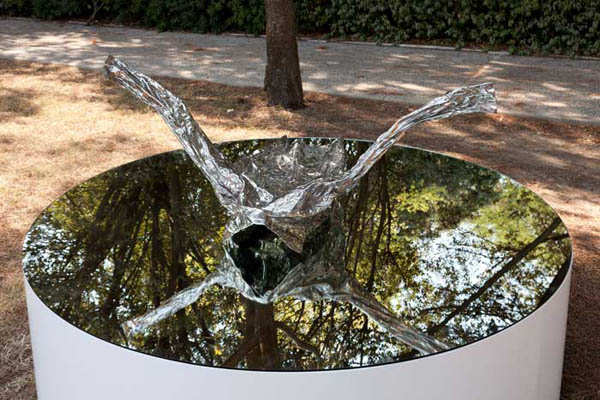Cina - Ma Han

Ma Han was made famous by the Ma Han Symbols, compositions in which hundreds of thousands of figures of tiny human beings, no bigger than grains of rice, fight, breed, suffer and die, creating in just a few metres immense scenes that reflect the perception of man lost among the masses: an innovative and traumatic vision, with which Ma Han contributes to the current of new independent Chinese art, represented at the 54th Art Biennale by Ma Han himself and twelve other artists in the collateral event Cracked Culture? The Quest for Identity in Contemporary Chinese Art.
Another recurrent object in his work, ever since he was a student, is the crushed empty plastic bottle: used and thrown away, negligible and insignificant yet indestructible for hundreds of years, and therefore ironically destined to become a monument to our time, a powerful symbol of consumerism and disposable goods. Ma Han has transformed this crushed empty bottle into a giant steel sculpture: a true monument, that gives majesty and a spectacular effect to this common symbol of the ephemeral, which itself is not ephemeral. Similarly, he recently translated what is at the moment his most characteristic symbol, the flying shirt, into steel: in 2009, for a personal exhibition at the Found Museum in Peking, Ma Han immersed hundreds of men’s black shirts in starch and then, after having dried them in the pose he wanted, he made them fly in an infinite, threatening and potentially fantastic flock, like bats over people’s heads, like locusts, in a great installation with an intentionally indefinite symbolism, but with a powerful and spectacular sculptural effect.
Now the flying shirt, like the plastic bottle, has been transformed into steel and alights in various places in the world, spreading the message of the original message on a planet-wide dimension.
Text by
Gloria Vallese